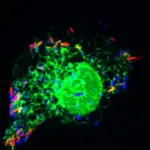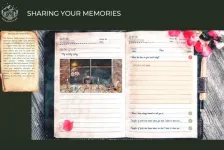(Press-News.org) NEW YORK, NY (May 10, 2021)--Scientists have discovered that many esophageal cancers turn on ancient viral DNA that was embedded in our genome hundreds of millions of years ago.
"It was surprising," says Adam Bass, MD, the Herbert and Florence Irving Professor of Medicine at Columbia University Vagelos College of Physicians and Surgeons and Herbert Irving Comprehensive Cancer Center, who led the study published May 10 in Nature Genetics.
"We weren't specifically searching for the viral elements, but the finding opens up a huge new array of potential cancer targets that I think will be extremely exciting as ways to enhance immunotherapy."
Fossil Viruses and Cancer
The idea that bits of ancient retroviruses within the human genome--known as endogenous retroviral elements, or ERVs--play a role in cancer is not new. Though ERV sequences have degraded over time and cannot produce viral particles, the viral fossils are sometimes inserted into other genes, which disrupts their normal activities, or act as switches that turn on cancer-causing genes.
More recently, however, research suggests ERVs may also fight cancer if they are transcribed into strands of RNA.
"When cells activate lots of ERVs, a lot of double-stranded RNA is made and gets into the cell cytoplasm," Bass says. "That creates a state that's like a viral infection and can cause an inflammatory response. In that way, ERVs may make the cancer more susceptible to immunotherapy, and many researchers are working on ways to trick cancer cells into activating ERVs."
Esophageal Cancers Turn on ERVs
In the new study, Bass and his colleagues created esophageal organoids from mouse tissue to follow the development of cancer from normal cells to malignancy.
Using these organoids, Bass found that a specific cancer-promoting gene in esophageal cancers called SOX2 leads to induction of expression of many ERVs.
As the expression of ERVs and the accumulation of double-stranded RNAs that can result from ERV expression can be toxic to cells, the researchers found that there is a specific enzyme called ADAR1 that quickly degrades these double-stranded RNAs.
ADAR1 has been implicated in esophageal cancer by other researchers, although its role had been unclear. Levels of ADAR1 are known to correlate with poor survival. "The cancers are dependent on ADAR1 to prevent an immune reaction that can be very toxic to the cells," Bass says.
Some patients with esophageal cancer are currently treated with immunotherapy, which has been shown to increase survival by several months. "We have a lot of enthusiasm that blocking ADAR1 may both have direct efficacy for esophageal cancers and that ADAR1 inhibition may have even great effects by enhancing the efficacy of cancer immunotherapy in patients with esophageal cancer," Bass says.
Organoids Reveal Other Potential Targets in SOX2 Cancers
Beyond the results regarding ADAR1 and ERVs, the process of modeling the development of esophageal cancer via genomic engineering of organoids also revealed many other processes in esophageal cancer that could lead to new treatments.
"The way we used organoids to build cancers up from the normal cell is a powerful system for uncovering cancer-causing activities and testing therapeutic targets," Bass says. "By making individual genome alterations in these models one at a time, we can see which combinations of genetic alterations lead to cancer and then determine specific mechanisms of tumor formation."
The organoids in the current study started with overexpression of the SOX2 gene, a commonly amplified factor that promotes the development of squamous cancers.
In the study, the Bass team built a panel of organoids modeling the spectrum from normal esophagus to fully transformed cancer.
By being able to evaluate the differential features of normal and cancerous organoids, the team could dissect how the activity of SOX2 differs in normal and cancerous tissues. "It's important to understand the difference, since potential treatments need to target the cancer functions but have lesser impact upon normal tissue," he says. "It's relatively easy to kill cancer cells. The problem is, how do you kill cancer cells but spare other cells?"
The organoids revealed that when SOX2 is overactive--and two tumor suppressors are inactivated--SOX2 works with other factors to turn on an assortment of cancer-causing genes in addition to their effects upon induction of ERVs.
"These findings reveal new vulnerabilities in SOX2 esophageal cancers," Bass says, "that will now allow us to begin developing therapies that can precisely target the cancer cell and improve the treatment of patients."
INFORMATION:
More Information
Adam Bass also is the founding director of the Center for Precision Cancer Medicine at Columbia University, director of gastrointestinal oncology, and professor of medicine in the Division of Hematology and Oncology at Columbia University Vagelos College of Physicians and Surgeons.
The paper is titled "SOX2 Reprograms the Esophageal Squamous Carcinoma Epigenome and Induces Endogenous Retroviral Elements and dsRNA, Thereby Promoting ADAR1 Dependence."
Other Columbia authors: Hiroshi Nakagawa and Anil K. Rustgi.
The study was performed primarily at Dana-Farber Cancer Institute and Harvard Medical School before Bass moved to Columbia. See paper for full list of authors.
The research was supported by the Twomey Family Fellowship in Esophageal Cancer Research, the U.S. National Institutes of Health (grants R01 CA196932, R01 CA187119, P01 CA098101, and R00 CA215244).
Adam Bass receives research funding from Bayer, Merck, and Novartis; is a consultant to Earli and HelixNano; and a co-founder of Signet Therapeutics. See paper for declaration of interests from authors affiliated with other institutions.
Columbia University Irving Medical Center provides international leadership in basic, preclinical, and clinical research; medical and health sciences education; and patient care. The medical center trains future leaders and includes the dedicated work of many physicians, scientists, public health professionals, dentists, and nurses at the Vagelos College of Physicians and Surgeons, the Mailman School of Public Health, the College of Dental Medicine, the School of Nursing, the biomedical departments of the Graduate School of Arts and Sciences, and allied research centers and institutions. Columbia University Irving Medical Center is home to the largest medical research enterprise in New York City and State and one of the largest faculty medical practices in the Northeast. For more information, visit cuimc.columbia.edu or columbiadoctors.org.
DALLAS - May 10, 2021 - Scientists at UT Southwestern have discovered a key protein that helps the bacteria that causes Legionnaires' disease to set up house in the cells of humans and other hosts. The findings, published in Science, could offer insights into how other bacteria are able to survive inside cells, knowledge that could lead to new treatments for a wide variety of infections.
"Many infectious bacteria, from listeria to chlamydia to salmonella, use systems that allow them to dwell within their host's cells," says study leader Vincent Tagliabracci, Ph.D., assistant professor of molecular biology at UTSW and member of the Harold C. Simmons Comprehensive Cancer Center. "Better understanding the tools they use to make this happen is teaching us some interesting biochemistry and ...
Many have assumed that the rates of major abdominal surgeries in adults over 65 is increasing over time as the U.S. population ages and as new technology renders surgical procedures safer for older adults. Contrary to this popular belief, a new study from the University of Chicago Medicine found the frequency of abdominal surgery in older adults is decreasing, especially among adults over the age of 85. The study, which examined data from 2002 to 2014, was published May 10 in the Journal of the American Geriatric Society.
While the research was not able to determine the exact reasons for this shift, the results indicate that improvements ...
The relationship a dog has with its owner is related to its stress level. This is the conclusion of a newly published study from Linköping University, Sweden. The results, published in the journal Scientific Reports, also suggest that the link between stress and the owner's personality traits differs between dog breeds.
Researchers at Linköping University have investigated whether the stress levels of dogs are affected by the people they live with. Stress levels for the past several months can be determined in both dogs and humans by measuring the levels of stress hormone stored in hairs as they grow.
The researchers have collected hair from both dogs and owners, and measured levels of cortisol, the most important stress hormone, in them. They were interested in whether there ...
For organizations to reach their potential, they must leverage the expertise of their employees. However, research demonstrates that lower-status employees may not be heard because their "voices" are more likely to be ignored.
New research from the University of Notre Dame is the first to show that peers can help boost marginalized voices, and at the same time benefit their own status, all while helping their organization realize the potential of its employees' diverse perspectives.
Publicly endorsing -- or amplifying -- another person's contribution, while giving attribution to that person, enhances the status of both parties, according to "Amplifying Voice in Organizations," ...
Due to their complexity and microscopic scale, plant-microbe interactions can be quite elusive. Each researcher focuses on a piece of the interaction, and it is hard to find all the pieces let alone assemble them into a comprehensive map to find the hidden treasures within the plant microbiome. This is the purpose of review, to take all the pieces from all the different sources and put them together into something comprehensive that can guide researchers to hidden clues and new associations that unlock the secrets of a system. Like any good treasure map, there are still gaps in the knowledge and the searcher must be clever enough to fill in those gaps to find the "X". Without a map, there is only aimless wandering, but with a map, there is hope of finding the hidden ...
When a loved one dies, memories of that person become particularly valuable in connecting the mourners with the deceased. A new Weill Cornell Medicine online application, called Living Memory Home, offers a virtual and personal memorial space that allows mourners to deposit their memories and feelings about their loss and honor their loved one.
Living Memory Home users are able to create a memorial space that they can personalize with photos and messages. They can customize a virtual cabin and choose an appropriate view. The curated set of questions prompt users to write memories ...
AMES, Iowa - New variants of the SARS-CoV-2 virus most likely will necessitate the development of more vaccine options in the years ahead, and a biomedical scientist at Iowa State University believes the "key" to that development lies in the way the virus binds to human cells.
Michael Cho, a professor of biomedical sciences at Iowa State, is studying how to develop COVID-19 vaccines that target SARS-CoV-2's receptor-binding domain, or the part of the virus that docks with the host cellular receptor, angiotensin converting enzyme 2 (ACE2). This docking process allows the virus access to the host's cells, which leads to infection.
Cho was the lead author of a study recently published in the peer-reviewed scientific journal Frontiers in Immunology detailing the ability of a vaccine ...
Unlike the oscillations of sound waves, the oscillations of light are so fast that extremely complex equipment is needed to observe them directly. However, it is possible to measure the frequencies of these oscillations indirectly with frequency combs. These combs are made up of a set of regularly spaced "teeth" where each tooth corresponds to a frequency. Used as a graduated ruler, they offer the possibility of measuring an optical frequency with great precision. This makes it possible, among other things, to measure variations in the distance between the Earth and the Moon with an accuracy ...
MADISON - By engineering a short chunk of protein, or peptide, that can prevent the attachment of human parainfluenza viruses to cells, researchers have improved a method in rodent models intended to help keep children healthy.
Human parainfluenza viruses, or HPIVs, are the leading cause of childhood respiratory infections, responsible for 30% to 40% of illnesses like croup and pneumonia. The viruses also affect the elderly and people with compromised immune systems.
To sicken people, HPIVs must latch onto cells and inject their genetic material to start making new viruses. HPIV3 is the most prevalent among these viruses. ...
Autistic people have far greater risks of long term physical health conditions than others, but the reasons for this remain unclear. New research from the University of Cambridge suggests that unhealthy lifestyle habits may be an important contributing factor. The results are published today in the journal Molecular Autism.
Earlier research suggests that autistic people die 16-35 years younger than expected, and that greater health problems may contribute to this risk. The present study is the first to consider the diet, exercise, and sleep patterns of autistic adults and how these patterns may relate to health outcomes.
The team at the Autism Research Centre in Cambridge developed an anonymous, online survey about lifestyle choices and daily habits, personal medical history, ...





